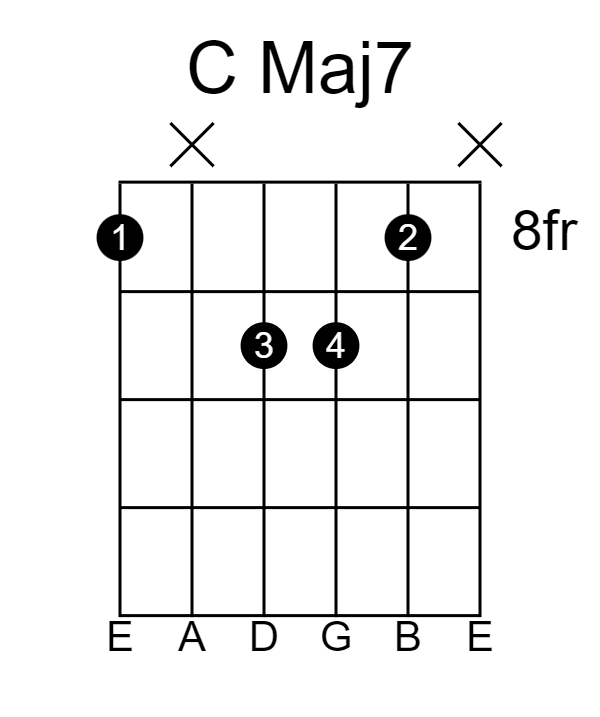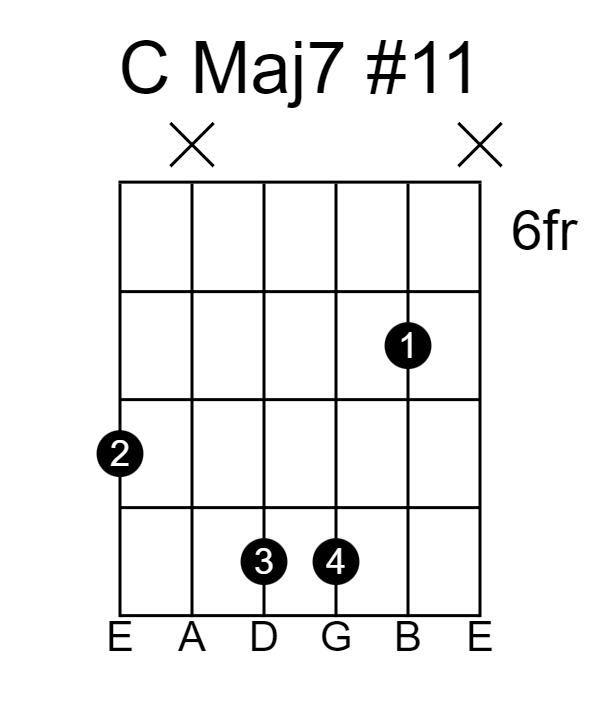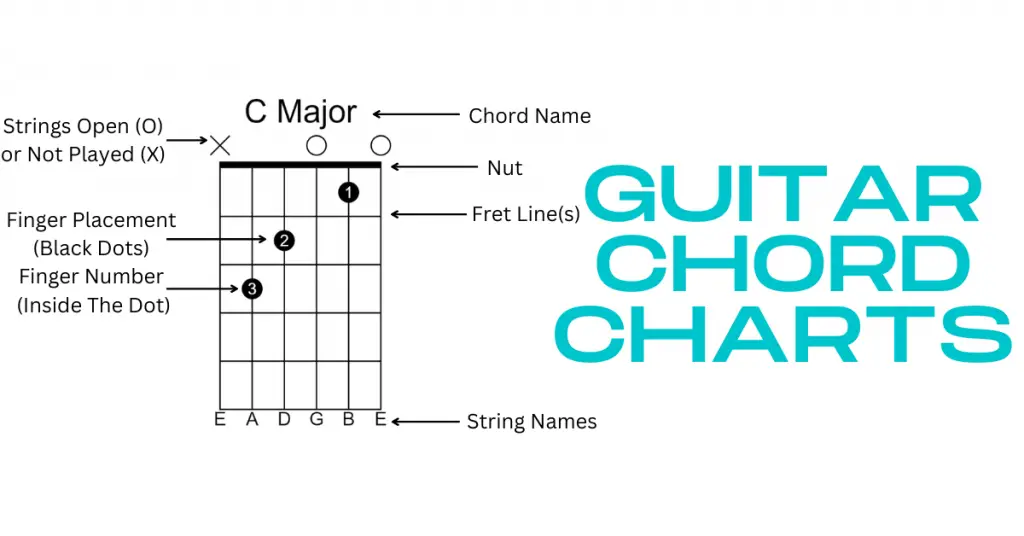Table of Contents
Today you’re going to learn 10 easy jazz guitar chords. These guitar chords are commonly found in jazz standards and regularly used in other jazz compositions.
After you’ve gone through this guitar lesson you’ll have a relatively diverse set of chords to use for your jazz guitar playing.
Most of these chords are based around the root note C.
You’re going to start by looking at the three most common types of jazz guitar chords, which are seventh chords.
These are your major seventh chord, your dominant seventh chord, and your minor seventh chord.
These first 3 chords will all be based around your root note C at the 8th fret of your low E string.
C Major 7
One way you can think about a C major seventh chord is to take your open A minor chord shape and bring it up to the 9th fret of your G string.
You’ll play this open A minor chord with your ring (3), pinky (4), and middle finger (2). Once you have brought the minor shape up to the 9th fret of the G string, you will put your index finger (1) onto the 8th fret of your low E string.

C Dominant 7
To make C dominant seventh, also known as C7 for short, all you have to do is take your major seventh interval and move it down a half step, so now it becomes a flattened seventh (your dominant seventh).
This is done on the 9th fret of your D string.
You’ll want the 9th fret of D to go down a half step, and normally when you do that movement you’ll swap your middle (2) and ring (3) fingers as shown in the image below.

C Minor 7
Now you’ll want to make your minor seventh chord.
For this you need to take your major third in the dominant seventh chord and bring it down a half step.
That means you’ll take your E note, the 9th fret of your G string, and bring it down to the 8th fret of your G string.

C Minor7b5
The next set of three chords are going to be closely related to the minor seventh chord.
You’ll start by turning the C Min7 into a C Min7b5.
The way you’re going to do that is you’re going to take that 8th fret of your B string and bring it down to the 7th fret of your B string.
This is the fifth interval, and since you’re flattening that fifth it is now a minor seventh chord with a flat 5, hence the name: C Min7b5

C Diminished 7th
Now you’re going to play a diminished seventh chord.
You’ll do this by moving that 8thfret on the D string down to the 7th fret D string.
You’ll use your index finger as a bar.

C Minor 11
In this chord shape you’ll take your Minor seventh chord and take the fifth interval, which is the 8th fret of the B string, and move it down to your eleventh interval, which is the 6th fret of the B string.

C Major7#11
Now you’re going to take your original major seventh shape, and you’ll move the 8th fret B string down to the 7th fret B string.

E Major 9
Now you’re going to look at the Major 9, Dominant 9, and Minor 9 chords.
We’ll play these on the A string, because that’s where it’s common to see the chord types played, and it’s just easier to play them overall.
Here’s your E Major 9:

E Dominant 9
No you’ll turn your EMaj9 into EDom9.
To do this you need to bring that 8th fret G string down a half step to the 7th fret G string.

E Minor 9
Now you’ll make your EMin9 chord by going to your EDom9 shape and bringing your index finger down an extra half step.

Summary: Easy Jazz Guitar Chords
Thank you for reading and learning these easy jazz guitar chords!
One thing to keep in mind: When a chord’s root note is on the low E string, like the first seven chords in this lesson, you can move that root note to the high E string. Doing this doubles the number of chord shapes you learned!
Practice these chords by trying out some jazz standards.
You can also try using some of these chords as substitutes for your regular guitar chords.
For example, take your regular E Major chord, and substitute it with E Major 9.
That wraps up today’s lesson! Let me know which chord is your favorite in the comments below.



